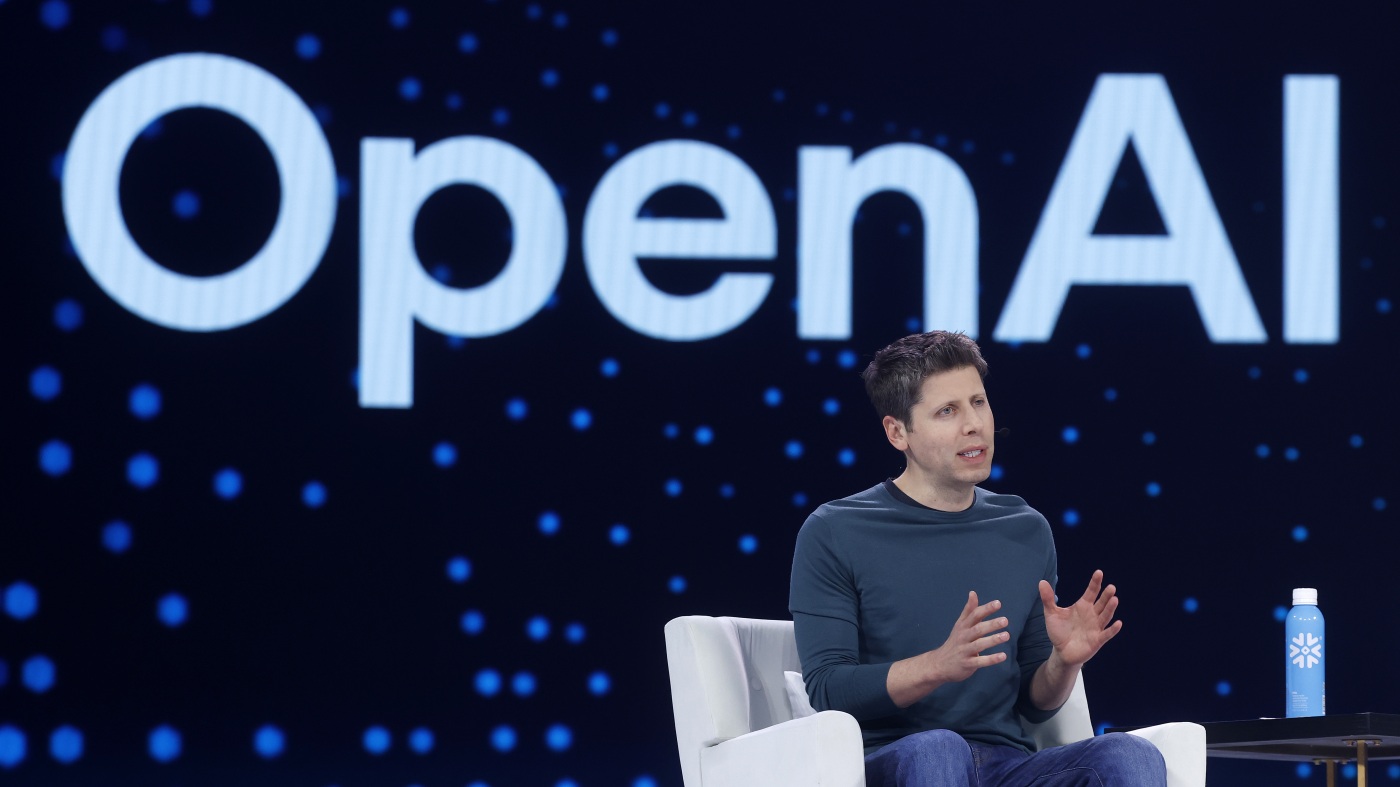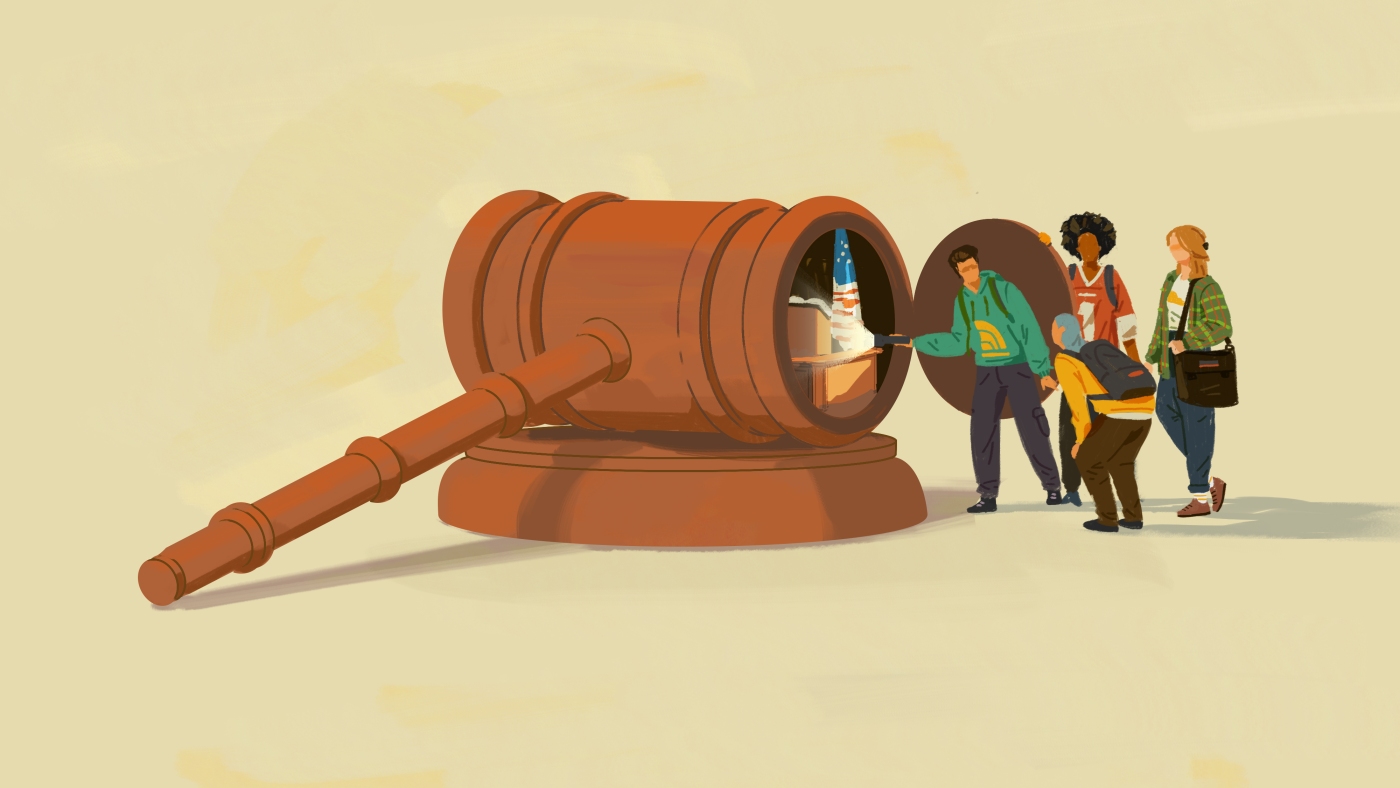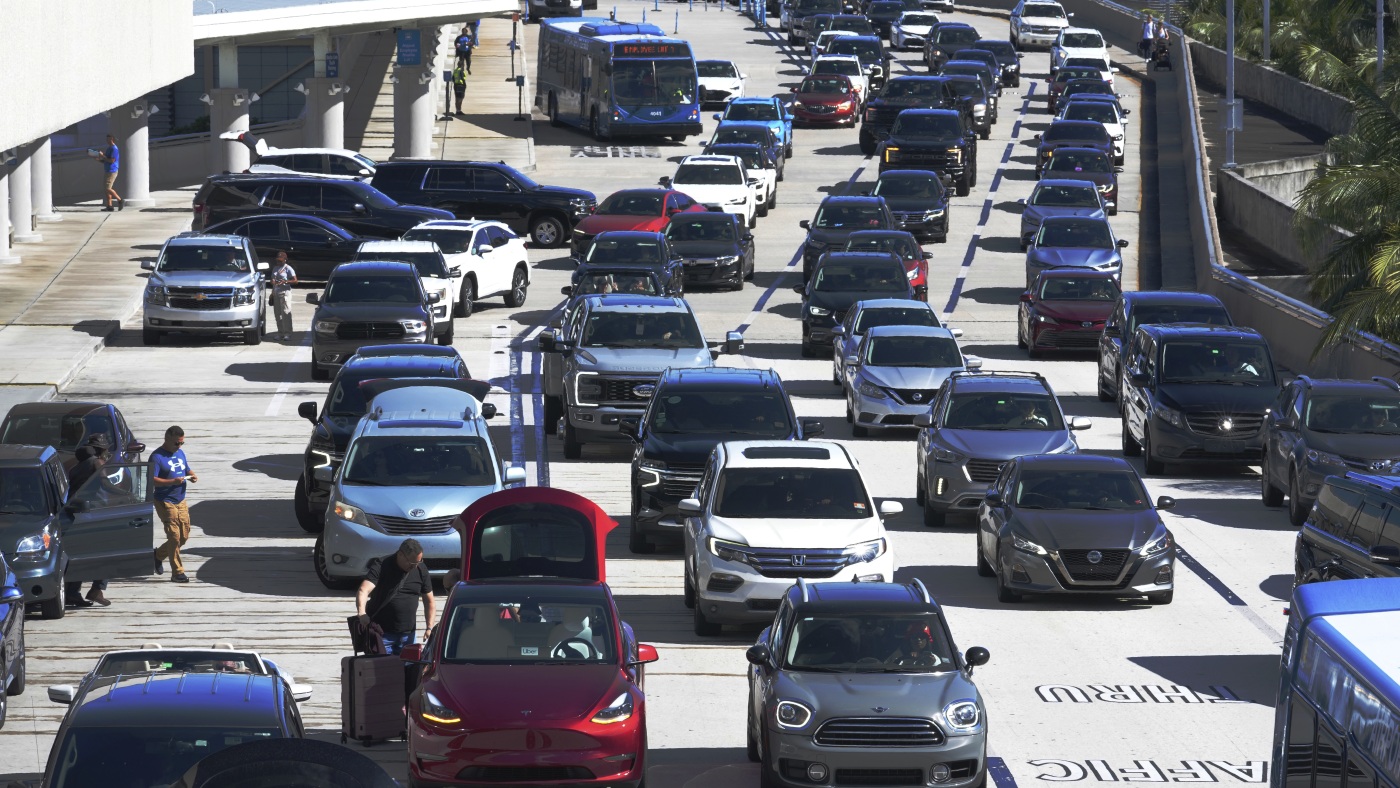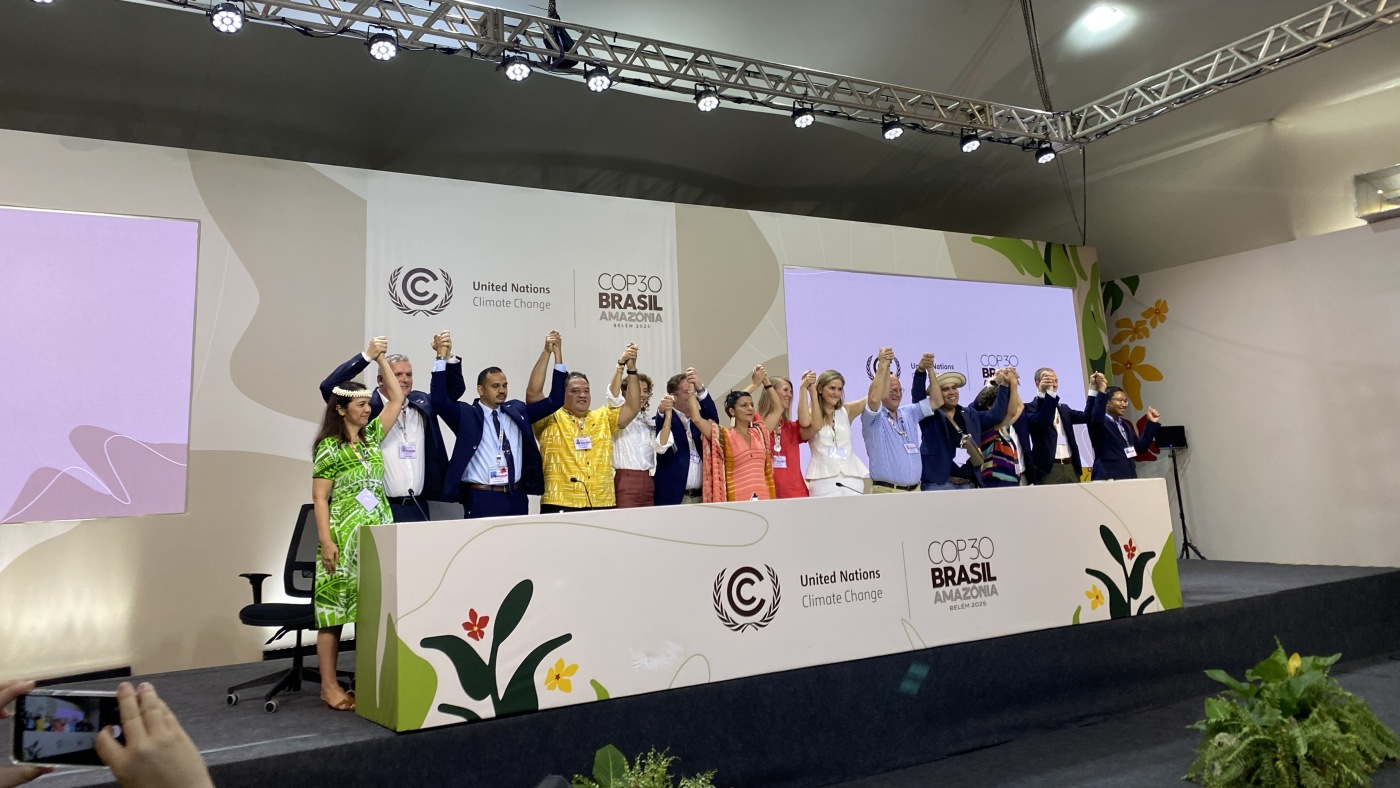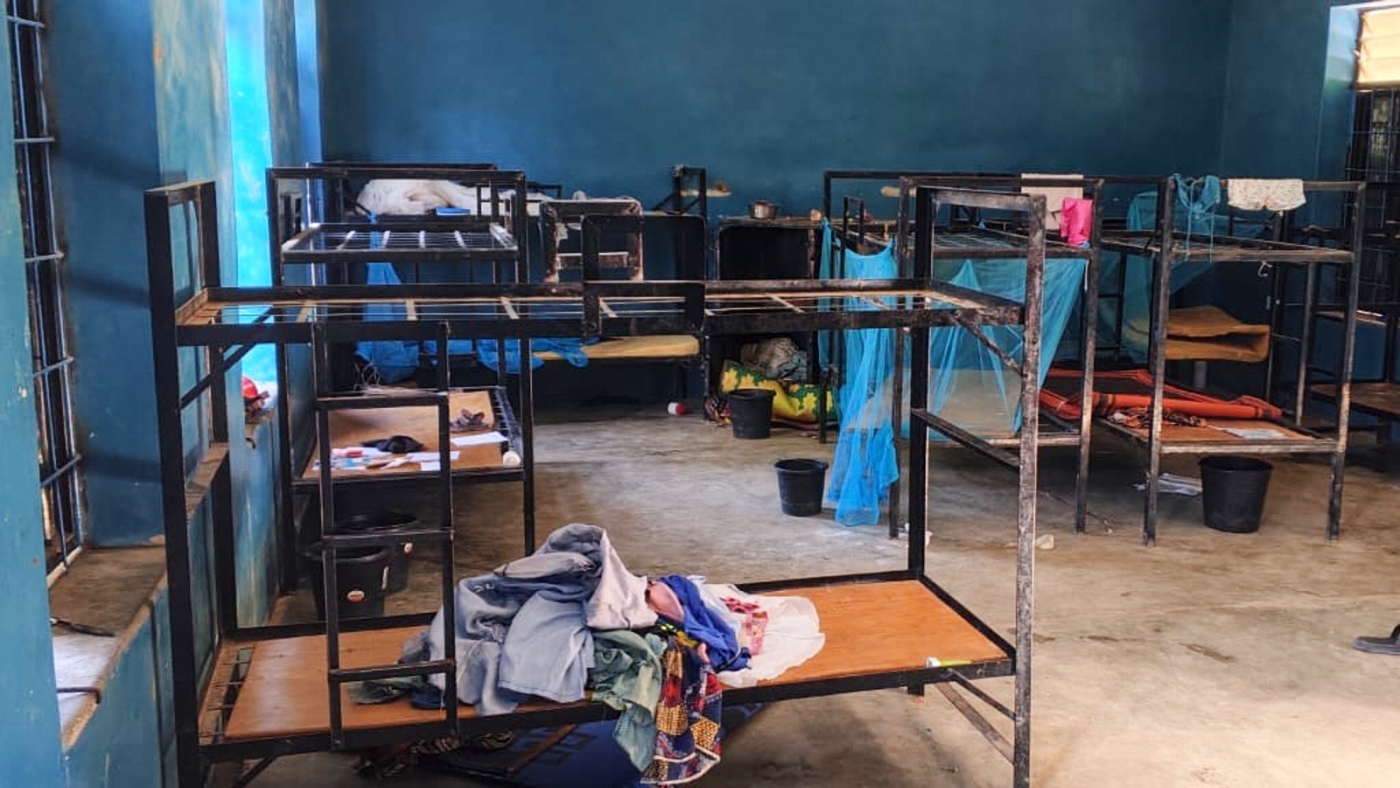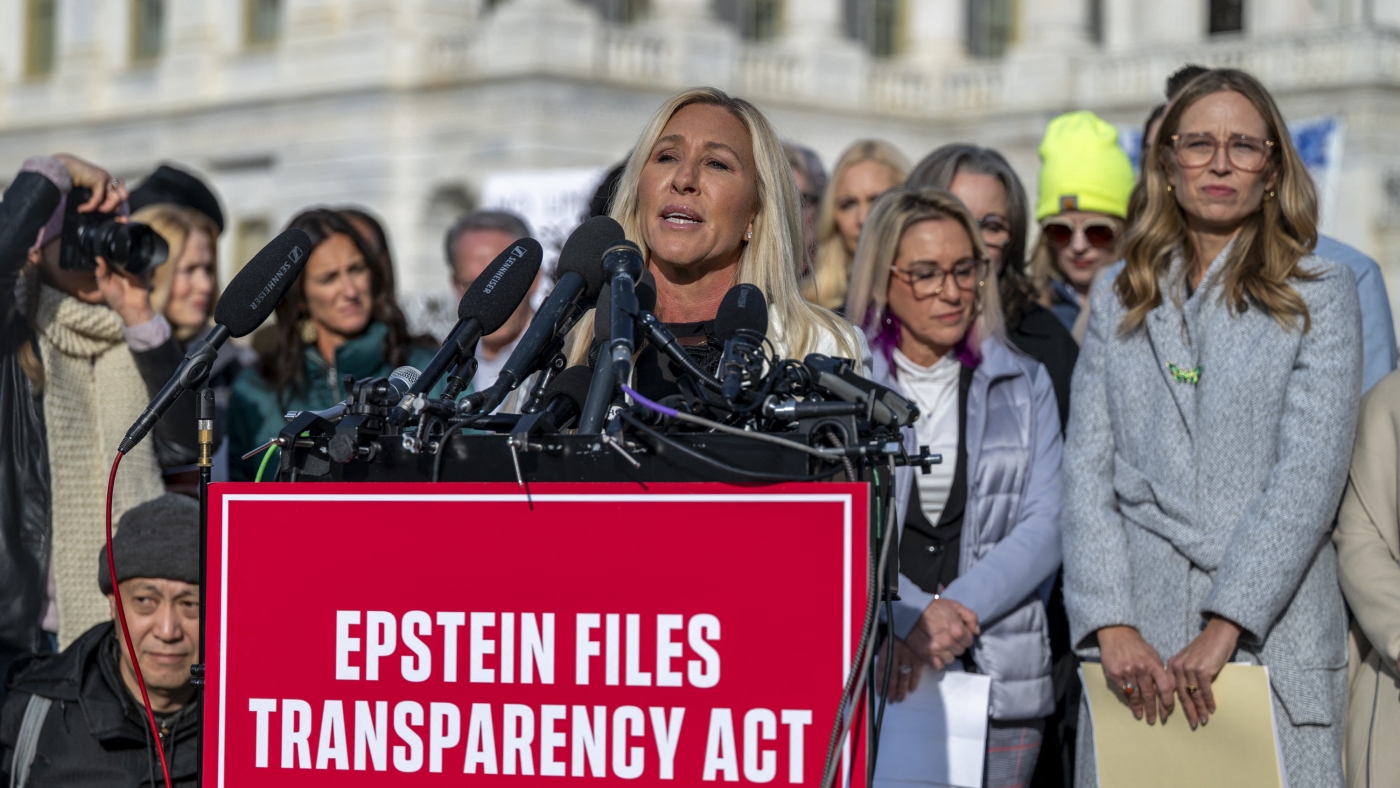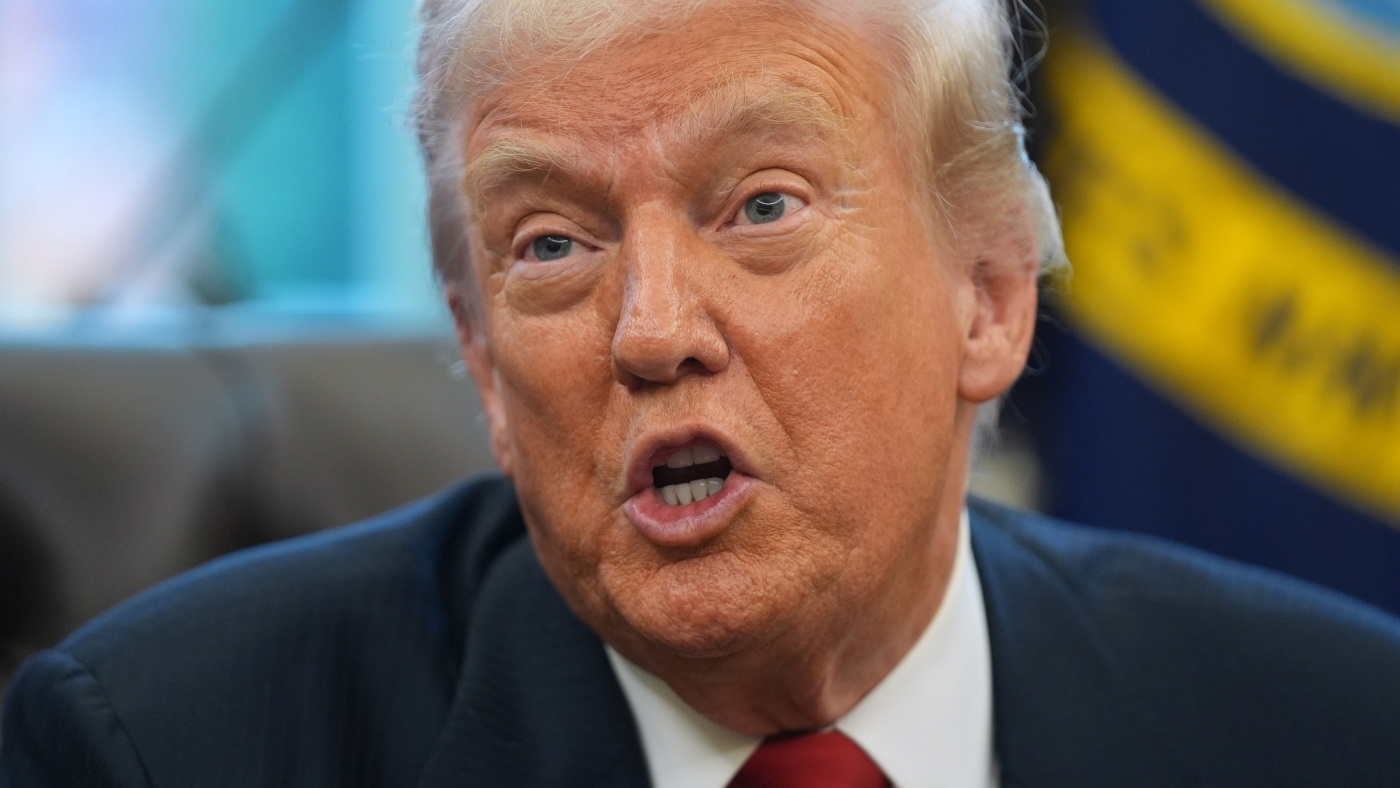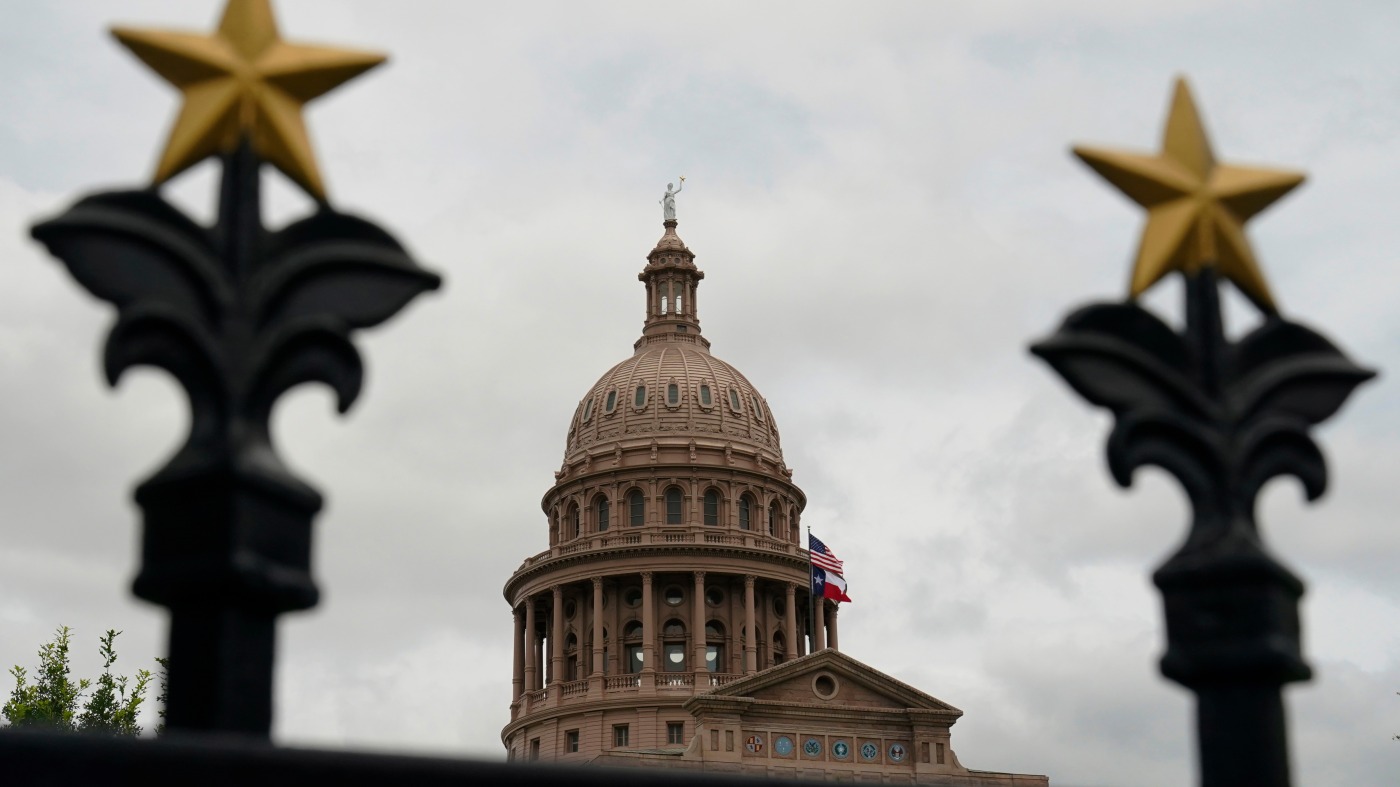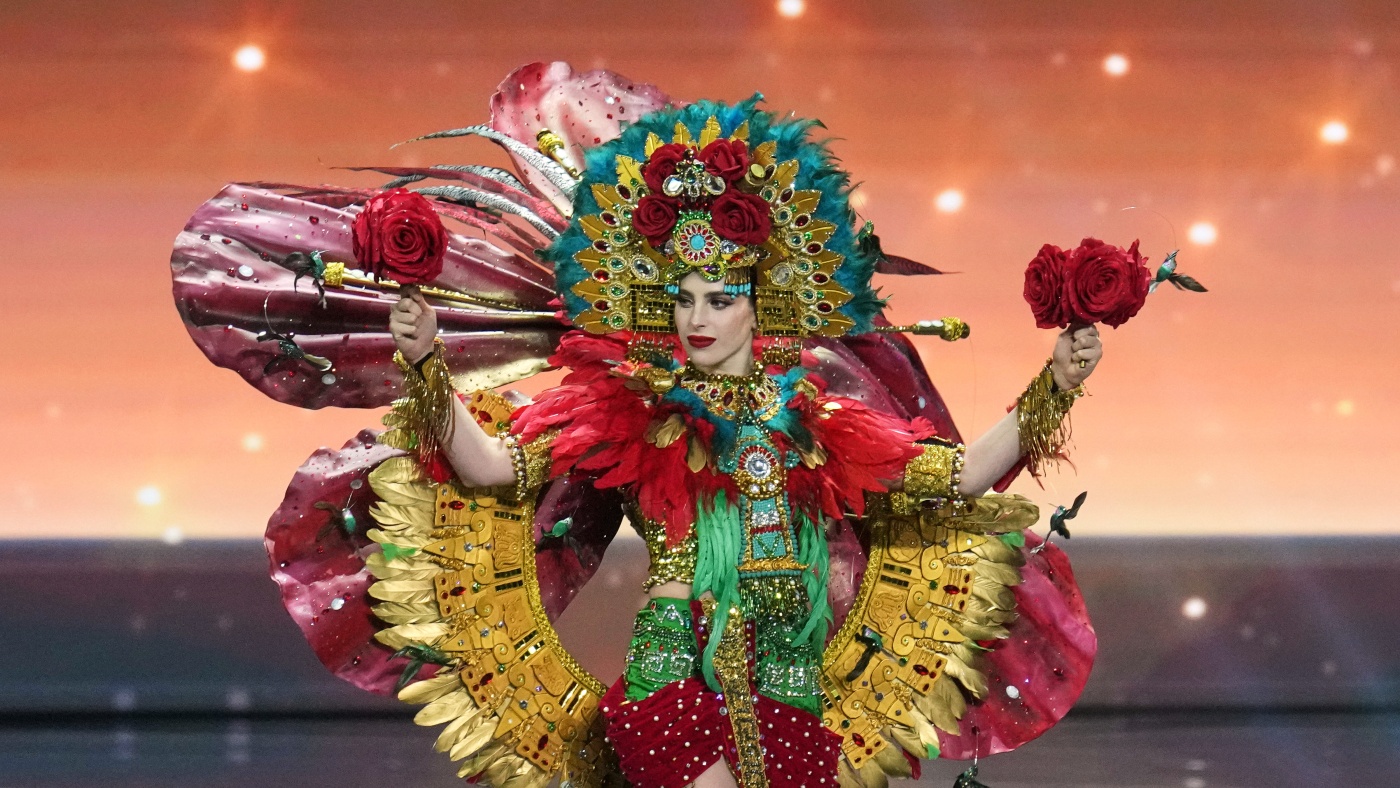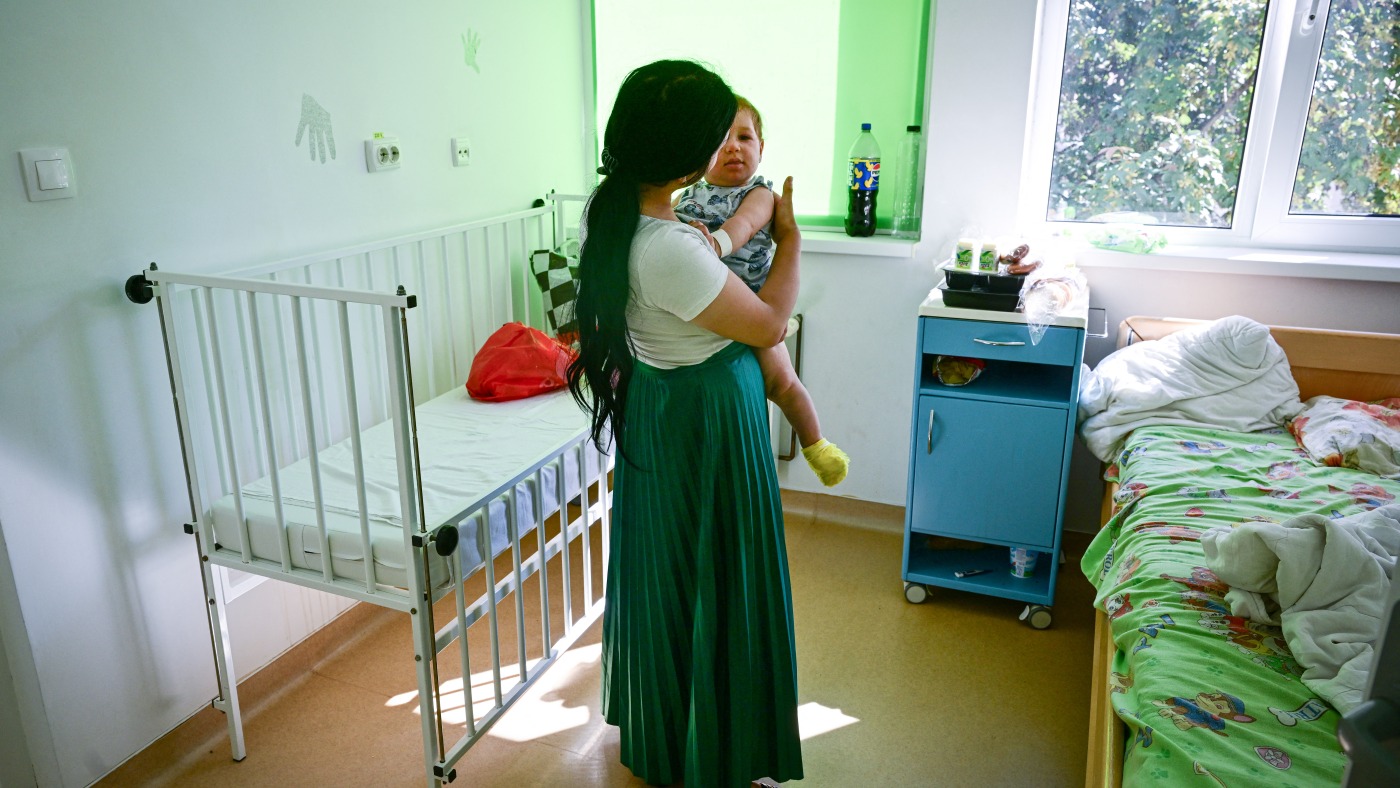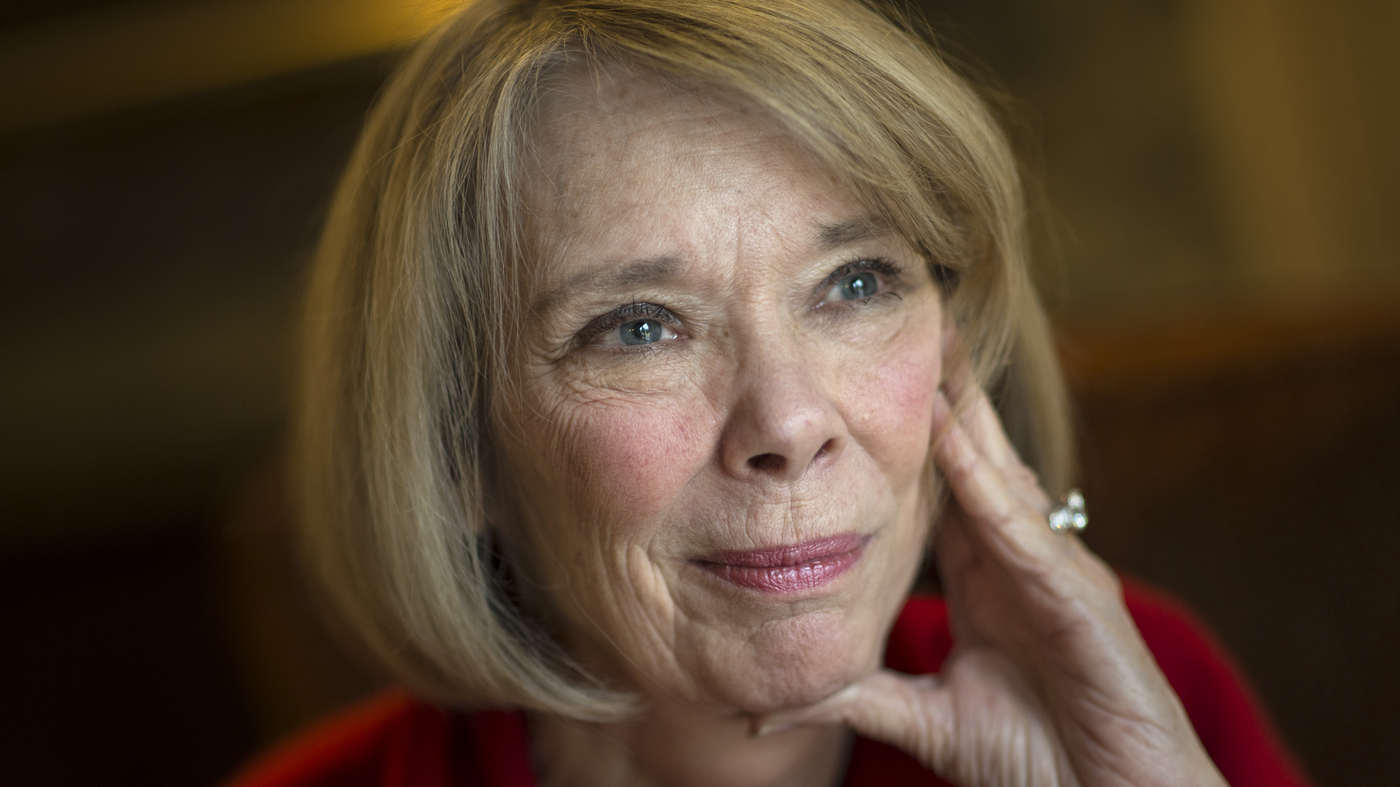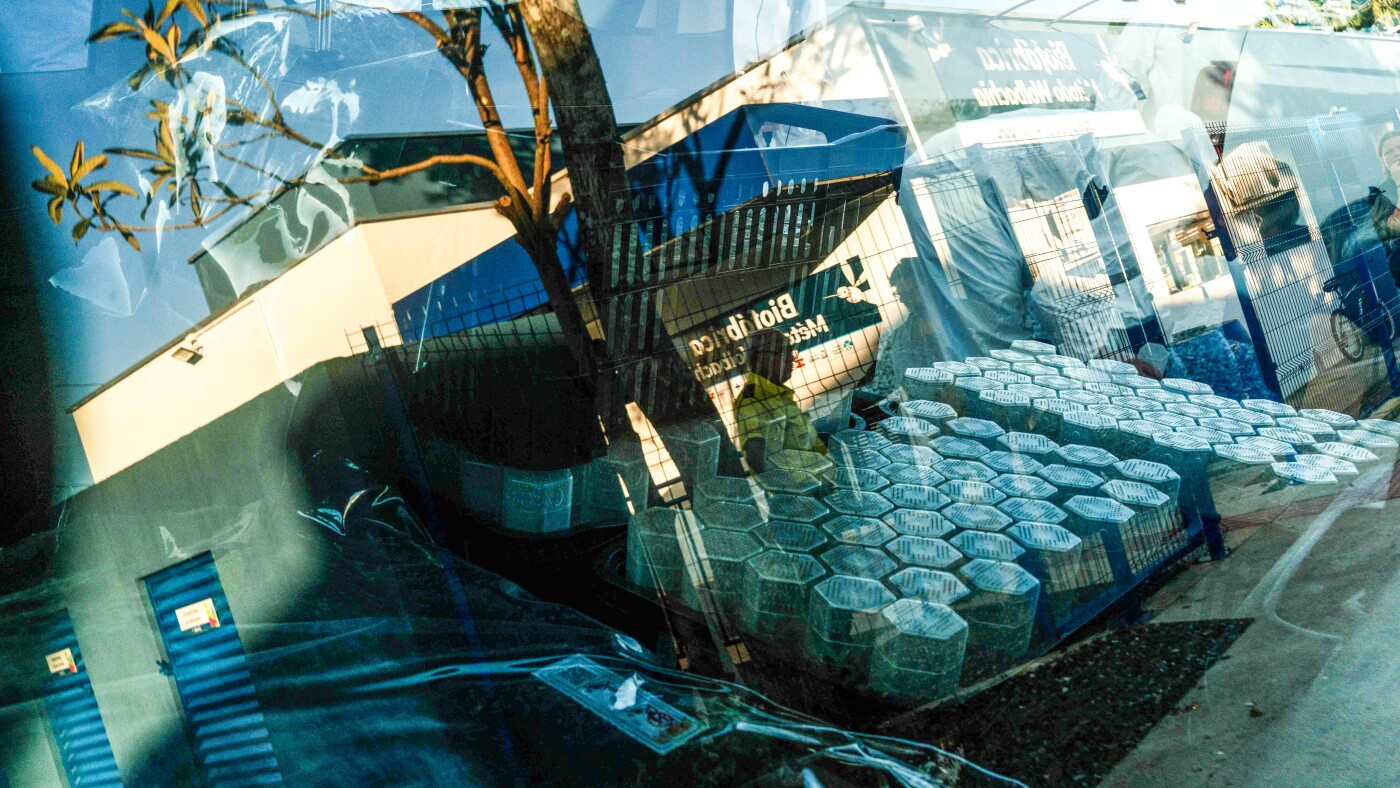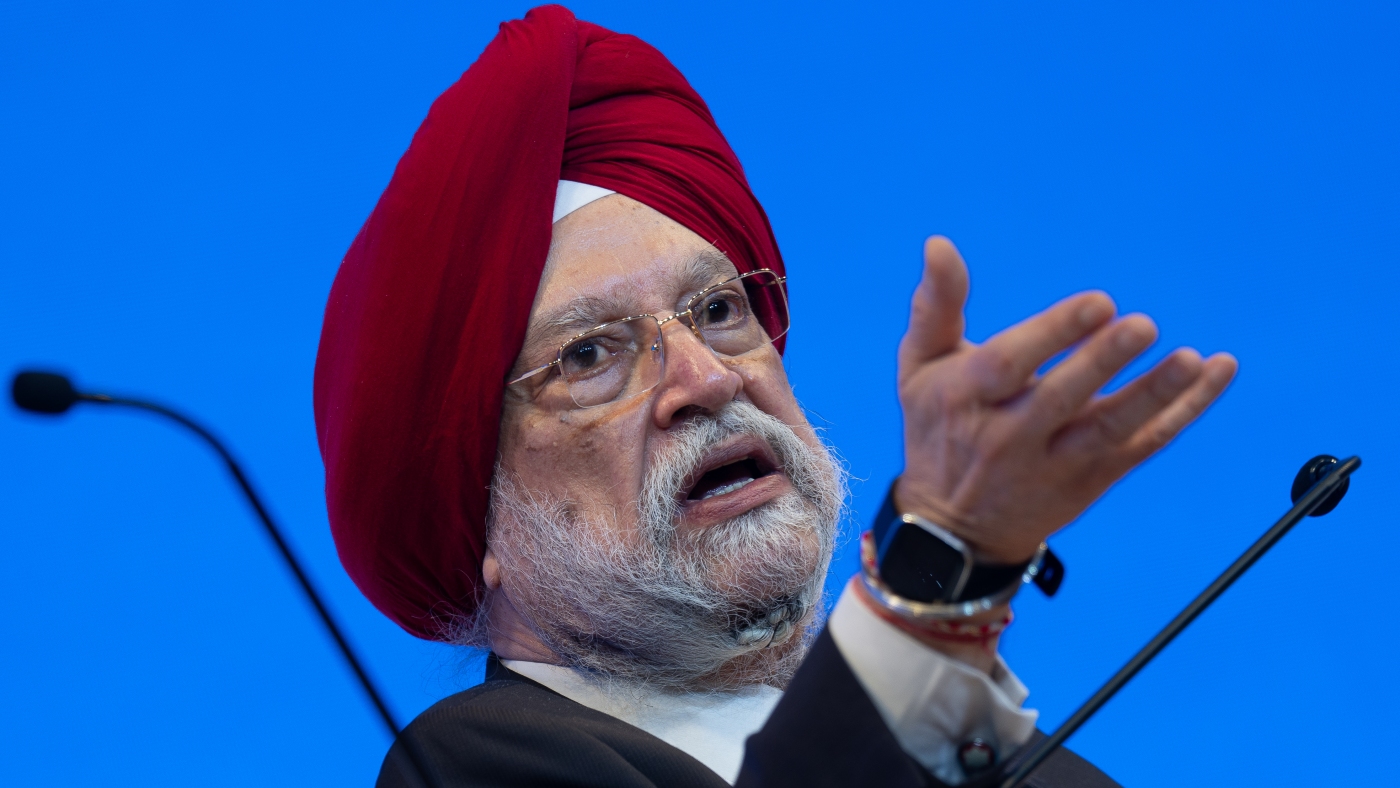
Kevin McKenna (left) and Kathleen Wang look over notes at the Charles S. Hirsch Center for Forensic Sciences Office of Chief Medical Examiner in New York City. They are part of a team working to identify the remains of people who died on Sept. 11, 2001. José A. Alvarado Jr. for NPR hide caption
toggle caption
José A. Alvarado Jr. for NPR
Last month, New York City officials announced they had identified the remains of another three victims who died in the Sept. 11 attacks at the World Trade Center in lower Manhattan.
It was the latest update to come out of the missing persons unit of the New York City medical examiner's office, which since 2001 has been running the forensic investigation into the deadliest terrorist attack in U.S. history.
But the news may have surprised those who didn't know that many 9/11 victims still haven't had any of their remains identified — and that city officials are still trying, 24 years later.

Mark Desire, assistant director of forensic biology, leads the team working on World Trade Center identifications. The jacket he wore on Sept. 11 is kept in a display case behind him. José A. Alvarado Jr. for NPR hide caption
toggle caption
José A. Alvarado Jr. for NPR
"One of the biggest questions we get is, 'You're still working on this? Why haven't you finished?'" said assistant director of forensic biology Mark Desire, who leads the team working on World Trade Center identifications.
Desire oversees the testing of thousands of human remains recovered from Ground Zero and the surrounding area for genetic material that could link them to known victims. The medical examiner's office has tested all 21,905 remains recovered, from fragmented body parts to small shards of bone. But in many cases, it has taken technological advancements occurring over the course of years for any DNA to be extracted.
"We just keep going back to those samples where there was no DNA. Now the technology's better and we're able to do things today that even last year we weren't able to do," Desire said.
The 9/11 attacks on the World Trade Center complex killed 2,753 people, according to the city's official count. Yet 40% of those victims — 1,100 people — have not had any of their remains identified by authorities.

Dr. Jason Graham is New York City's chief medical examiner and is working to identify as many remains as possible. José A. Alvarado Jr. for NPR hide caption
toggle caption
José A. Alvarado Jr. for NPR
Dr. Jason Graham, New York City's chief medical examiner, said the office is still working to keep a promise made more than two decades ago. "That commitment was a very solemn promise to do whatever it takes, for as long as it takes, to get them identified," he said.
One of the victims whose remains have yet to be identified is Michael Iken, a bond broker who worked on the 84th floor of the South Tower.

A photo of Michael Iken and his wife, Monica Iken-Murphy. Monica Iken-Murphy hide caption
toggle caption
Monica Iken-Murphy
His wife, Monica Iken-Murphy, was one of the lead advocates for the construction of the 9/11 Memorial & Museum and regularly goes there to honor her late husband, whom she described as "such a good human." The memorial is located at the former site of the Twin Towers and is also where unidentified and unclaimed remains are stored.
Iken-Murphy said the medical examiner's office was doing a "great job" in continuing to identify victims' remains.
"If he does get found one day — and there's hope because we found three [new identifications in August] — I'm going to keep him there" at the memorial site, she said. "For me, I go there all the time to be with him, so the best place for him is there at that spot, because I know he's safe and secure there."
How forensic investigators search for DNA
The work is being done inside the medical examiner's DNA crime lab, a 15-story building in midtown Manhattan just steps from the East River. It is the largest public DNA crime lab in North America.
Since the Sept. 11 attacks, victims have been identified through a number of means, including dental X-rays, fingerprints and tattoos. Now investigators are mostly analyzing bone fragments for DNA. (The city also has some tissue samples, Desire said, but they can be trickier to test because of the commingling of DNA.)

The exterior of the Charles S. Hirsch Center for Forensic Sciences, which houses the medical examiner's office DNA lab, in New York City. José A. Alvarado Jr. for NPR hide caption
toggle caption
José A. Alvarado Jr. for NPR
To test bone, workers first scrape and brush the bone free of dirt and debris and then cut off a small piece weighing roughly one to two grams to test. That piece then goes into a mill that uses liquid nitrogen to freeze the bone before pulverizing it into a fine powder, unlocking any cells that might contain DNA. Once heat and chemicals are added to those cells, a machine analyzes them, aiming to yield some DNA information scientists can use to link the bone to a genetic profile in their database.
The harsh conditions at Ground Zero have made identifying the remains of 9/11 victims especially challenging. "The fire, the water that was used to put out the fire, the sunlight, the mold, bacteria, insects, jet fuel, diesel fuel, chemicals in those buildings — all these things destroy DNA," Desire said.
Some victims' remains were exposed to extreme heat for a long time. A human body is typically cremated after three hours in temperatures reaching 1,600 degrees Fahrenheit. Ground Zero burned for three months and hit temperatures even higher than that. "So there are a lot of victims that were cremated and nothing's left but ashes," Desire said.
Degraded human remains have yielded some results over the years thanks to innovations in the process of DNA extraction and analysis, officials said, such as more precise machines and better testing materials. Even the process for obtaining samples has improved: The office used to grind bone fragments into a powder by hand using a mortar and pestle.
Though improved technology can now pull DNA from badly damaged samples, staff have still been unable to extract genetic information from some highly degraded remains, even after years of testing. Roughly a third of the 9/11 victims' remains kept by the New York City medical examiner's office are unidentified.
Reference samples are key to making IDs

Criminalist Kevin McKenna uses an animal bone to demonstrate the process the lab takes to extract DNA. José A. Alvarado Jr. for NPR hide caption
toggle caption
José A. Alvarado Jr. for NPR
Even if a remain yields a DNA result, it still has to be linked to an existing profile in the medical examiner's database.
Those profiles consist of DNA extracted from the personal effects of the victims, such as razors and toothbrushes, as well as samples given by family members.
The medical examiner's office has stepped up its efforts to solicit new and updated DNA samples from victims' relatives, which led to three new IDs announced in August. (In addition to identifying the remains of a victim for the first time, the office also identifies additional remains of victims who've had some remains identified before.)
"What we're seeing today are the children, the babies of those moms and dads that died, now those babies 24 years later, they're asking, 'Why wasn't mom or dad identified? Can you use my sample?'" Desire said.
Some victims — the office says no more than 100 — have no reference samples on file. Authorities said those victims may have had no family members, or that their family members declined to participate in the difficult process or were unable to be contacted in one of the scores of countries the victims came from.
Meanwhile, the office has identified 45 distinct DNA profiles — gleaned from roughly 400 human remains — with no matches to any existing profiles in its system.
Close relations of the victims who want to provide a saliva sample can contact the medical examiner's office to be sent a DNA collection kit by mail.
What identifications mean to families

Lead World Trade Center anthropologist Jennifer Odien communicates with families about the process of identifying their loved ones. José A. Alvarado Jr. for NPR hide caption
toggle caption
José A. Alvarado Jr. for NPR
When a victim's remains are identified, it often falls to forensic anthropologist Jennifer Odien to tell their family.
As the lead World Trade Center anthropologist in the medical examiner's office, Odien helps maintain the repository of human remains and communicates with families about the process of identifying their loved ones — including when investigators make a positive match.
"I will call them and explain what was identified to whatever level they want," she said. "So some families will just say, 'Thank you for letting me know. I don't want to know further information.' Other family members want to be very specific."
Some families ask not to be contacted at all. "Not wanting to process that trauma over and over again is probably a main reason why they don't want to get that phone call."
Odien said she doesn't like to use the word "closure," but she hopes new identifications can help victims' family members process their grief. "Having something physical, whether it's to cremate, to bury, to have a ceremony, is very important to a lot of individuals, a lot of families," she said.

People visit the 9/11 memorial pools in Lower Manhattan. José A. Alvarado Jr. for NPR hide caption
toggle caption
José A. Alvarado Jr. for NPR
Paul Keating, whose mother Barbara was one of the three newest identifications made by the office, called the news "stunning."
"They're doing this for us. And they're doing it like they're possessed," he told NPR last month. "We are stunned, amazed, in awe. I couldn't say enough great things about that crew."
Other family members have yet to receive any news. Charles Wolf, whose "wonderful wife" Katherine was killed on 9/11, said he has always believed she died instantly when the plane hit her office on the 97th floor of the North Tower. Katherine had just started a new job at the firm Marsh & McLennan.
"There's absolutely no way she could have even survived a second. It was vaporization," Wolf said, adding that it would be "horrible" if he were to learn otherwise. Still, he said he's grateful for the work being done by the New York City medical examiner's office.
It is work that's personal for Mark Desire, who was part of a four-person crew sent by the chief medical examiner to the Twin Towers the morning of the attack. Desire was standing in the shadow of the South Tower when it collapsed, tossing him into the side of a nearby building. The New Jersey State Police quickly brought him and other members of the team to safety across the Hudson River. Today, the windbreaker jacket he was wearing that morning is kept in a display case in the DNA lab.

Desire holds a photograph of himself (center) on the morning of the Sept. 11 attacks, taken when he and his team were escorted by New Jersey State Police from a ferry used to move victims to Jersey City. José A. Alvarado Jr. for NPR hide caption
toggle caption
José A. Alvarado Jr. for NPR
Desire called his work on 9/11 identifications "the greatest honor and most humbling experience of my life" and said it has been critical to see the impact the work has had on the victims' families.
"You're in a room … working on those same remains every day, it gets pretty tedious," he said. "It's important work, but to see how important it is to people, and they're just crying and hugging you all these years later, it's so powerful. And I think that is an inspiration to come back here, and we've got to keep making these identifications and keep pushing this technology."
Brian Mann contributed reporting.

 2 months ago
33
2 months ago
33


